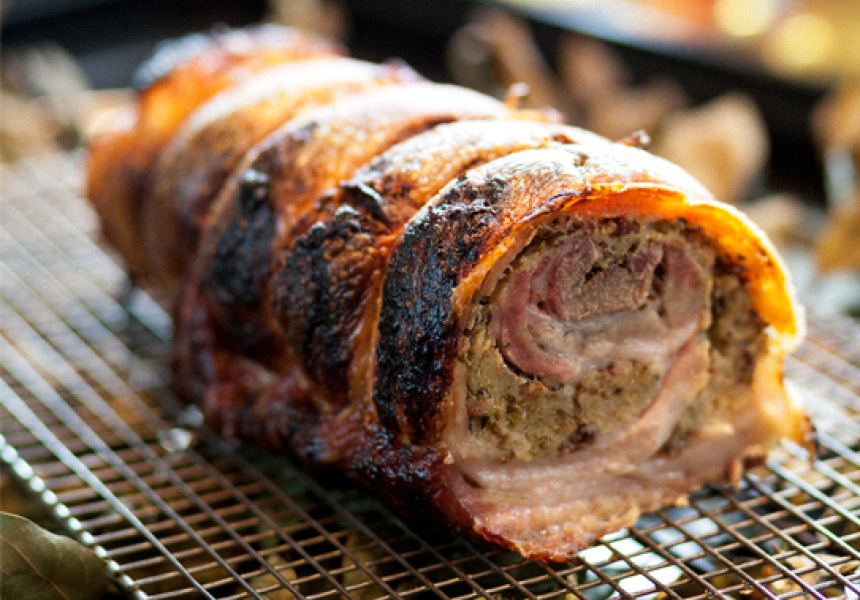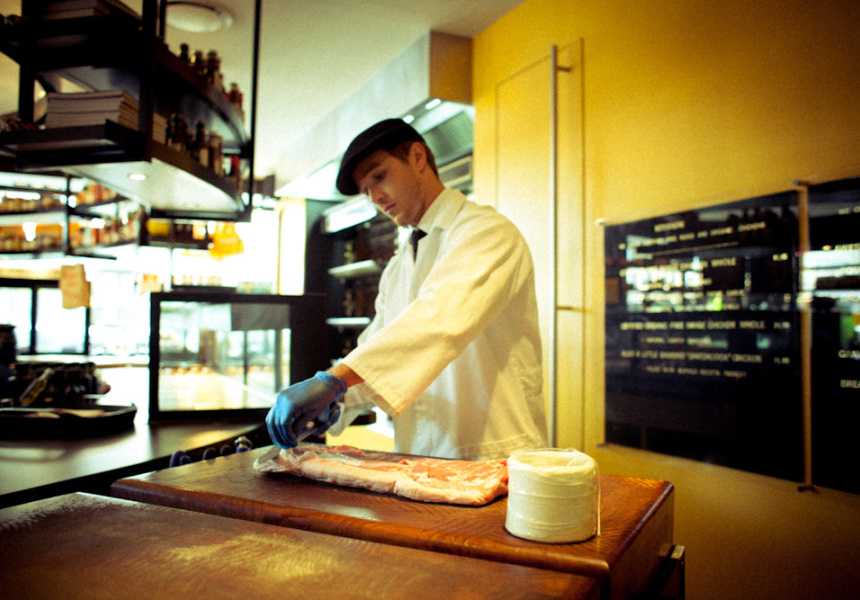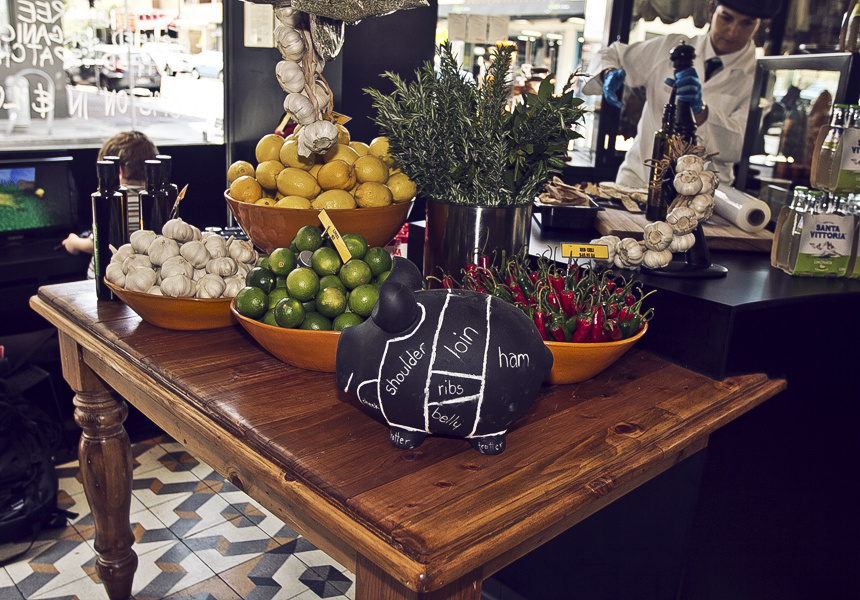For Robert Marchetti the premise behind his new Bondi butcher is simple. “Essentially, everything we sell is either free-range, organic or ethically prepared,” explains the Melbourne-raised chef and Bondi convert.
“What we tried to do when we created this place was deliver a new-age butcher, a third millennium approach with Australian-Italian philosophies,” he continues passionately. “The Italian philosophy is about making sure that everything we do is made to order and the Australian philosophy is based on the type of foods that we eat here. For example, we crumb our schnitzels to order with fresh breadcrumbs, egg wash, flour and seasoning.”
But he’s quick to point out that just because La Macelleria is quality-focused does not mean that this is the Louis Vuitton of butchers. “We do the classics – the burger and the schnitzel – but we want you to eat really good quality at comparable prices.”
Marchetti’s pedigree is trans-city, with Bondi Icebergs, North Bondi Italian and Neild Avenue to his name in Sydney, as well as Giuseppe, Arnaldo & Sons in the Crown complex in Melbourne. His partnership with restaurateur Maurice Terzini might be making news as it amicably dissolves and these assets are divvied up, but Marchetti says it’s simply about following your own path.
Stay in the know with our free newsletter. The latest restaurants, must-see exhibitions, style trends, travel spots and more – curated by those who know.
SIGN UPAnd his passion for quality meat and smallgoods (as well as the pestering of friends) has led him to a La Macelleria.
The signature dish at this third millennium butcher (along with the wall of rotisserie chickens) is the stuffed, rolled pork belly. It comes straight from the menu at North Bondi Italian (featuring as the Monday night roast), but is prepared daily at La Macelleria. The whole process is on show as the butchers fill and truss the rolls on spot-lit butchers blocks. Sliced fresh to order to fill Panini or to take home, you can stroll past the corner shop on any given day and see the crackling coated rolls resting in the window, ready for the lunchtime crowds.
Today, Daniel Roper is preparing the rolled pork belly, and having previously worked in the kitchens at North Bondi Italian, he knows this dish well. But there’s still clearly an art to the process.
The stuffing is a carefully thought out ratio of polenta bread, pancetta, sage, red onion, celery, butter, house chicken stock and seasoning, and is piled in a tray, freshly made and ready for action.
How to roll the pork…
The Berkshire pork belly has been boned, trimmed and is laid out pink and glistening on the butchers block, while Roper selects a sharp, thin knife.
With surgical precision, the edges of the belly are lifted and butterflied open, following the grain of the meat to lay it out thin and flat, skin-side down. The bulkier sections are pressed down with the heel of the palm to ensure a more uniform thickness and to allow even cooking through the whole roll.
Once the belly is opened out, Roper adds handfuls of the stuffing, pressing it onto the meat and pushing it into any nooks. He works away from himself, covering the meat in an even thickness to about three-quarters of the way across, leaving the far edge free so he can tidy and secure the roll without losing the stuffing.
Once the flat belly is evenly covered, he grabs the edges closest to him and, still working away from himself, rolls the pork belly up from one side to the other, finishing with the edge that missed out on the filling.
Once rolled, Roper cleans up any stuffing that has escaped, pressing the filling firmly into the ends to make sure the roll has a solid filling and no air pockets.
From here, it’s a simple matter of trussing the roll to keep it together for cooking. Using butchers string, he makes a loop, secures it around the roll and then repeats the process, evenly spacing the loops along the roll and without breaking the string. He tightens as he goes until the whole roll is secured with what looks like a blanket stitch to hold the shape and trap the stuffing.
The more evenly the string is spaced and secured, the more even the cooking of the roll.
Once it’s trussed, the roll is slow-cooked for four hours and then finished at a higher temperature towards the end to get the crackling crisp and ready for the window display the following day, ready to slice to order to fill panini.
If you’re really keen, you can order in advance and take a whole roll home.
La Macelleria
Corner Curlewis & Gould Streets, Bondi Beach
Hours
Daily 10am–8pm



